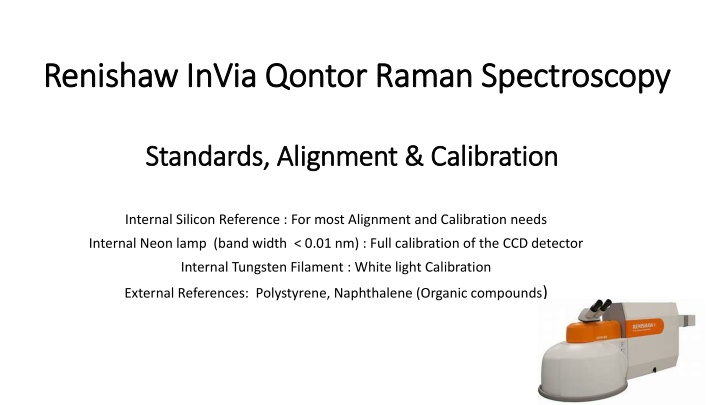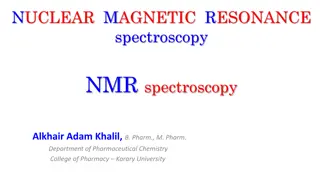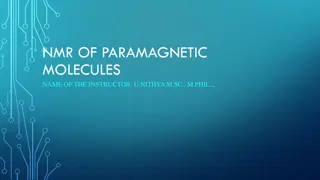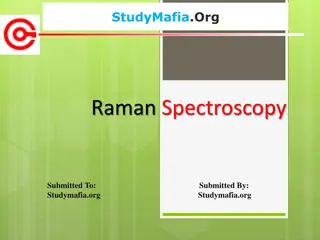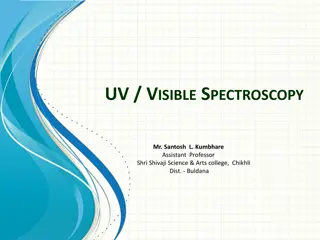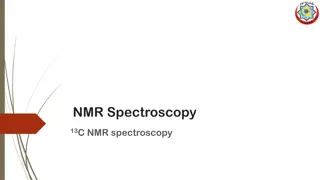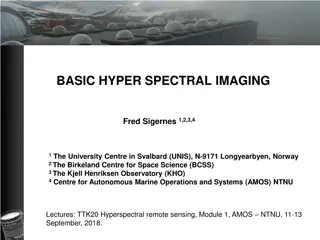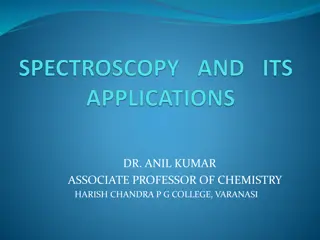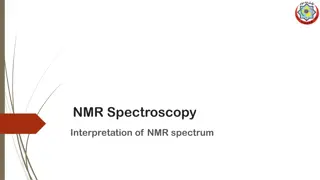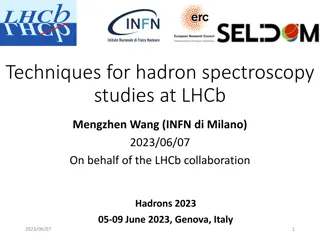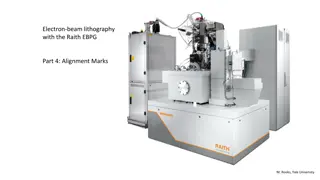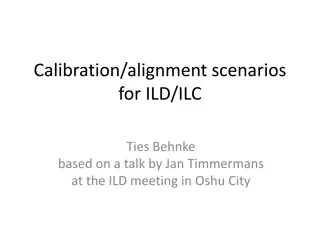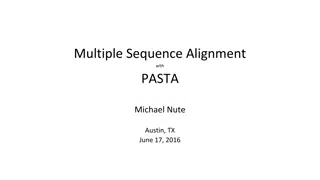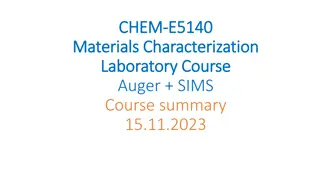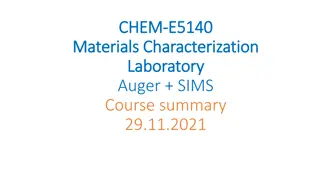Renishaw InVia Qontor Raman Spectroscopy Standards and Alignment Procedures
Renishaw InVia Qontor Raman Spectroscopy system features various calibration standards and alignment procedures such as using internal silicon reference, neon lamp calibration, and external references like polystyrene and naphthalene. The system also includes auto-align routines for maintaining optimal performance, regular maintenance tasks like neon reference calibration, and factors affecting confocality, Raman intensity, spectral resolution, and spatial resolution.
Download Presentation

Please find below an Image/Link to download the presentation.
The content on the website is provided AS IS for your information and personal use only. It may not be sold, licensed, or shared on other websites without obtaining consent from the author.If you encounter any issues during the download, it is possible that the publisher has removed the file from their server.
You are allowed to download the files provided on this website for personal or commercial use, subject to the condition that they are used lawfully. All files are the property of their respective owners.
The content on the website is provided AS IS for your information and personal use only. It may not be sold, licensed, or shared on other websites without obtaining consent from the author.
E N D
Presentation Transcript
Renishaw Renishaw InVia InVia Qontor Qontor Raman Spectroscopy Raman Spectroscopy Standards, Alignment & Calibration Standards, Alignment & Calibration Internal Silicon Reference : For most Alignment and Calibration needs Internal Neon lamp (band width < 0.01 nm) : Full calibration of the CCD detector Internal Tungsten Filament : White light Calibration External References: Polystyrene, Naphthalene (Organic compounds)
Run a Si Reference template Run a Si Reference template -Check for peak position and counts -Repeat for all lasers and gratings that will be used
Auto Align Routines As a part of health check need to run some auto align routines followed by quick calibration Optimizing the system alignment ensures, the system is performing at its best at all times. e.g. good signal to noise ratio, good spatial resolution Results and parameters continuously saved in log files and can be restored if needed. Auto Align Si reference : position very stable, contained in Qontor podule, rarely needs to be realigned. Auto Align Laser : Centers the spot on the crosshair and ensures maximum laser power is delivered through the pinhole. By adjusting the Right and Left beam steering mirrors & pinholes in illumination path. System is in a video mode. Auto Align CCD : The amount of light reaching the CCD and area on the detector Auto Align Slit : Adjusts the center and opening of the slit to focus laser on CCD
Neon Reference: Full calibration Neon Reference: Full calibration - Done twice year as maintenance, otherwise only if needed -Internal Neon lamp standard
Confocality Depends on: N.A of the objective Laser Wavelength Line or spot laser Slit opening (center and width) CCD area Raman Intensity Depends on: Wavelength Grating (no of grooves/mm) CCD (no. and size of pixel) Optics Filters (edge filter) Polarization Objective lens Spectral Resolution Depends on: Wavelength Grating (no of grooves/mm) CCD (no. and size of pixel) Entrance slit aperture Natural bandwidth of the peak Spatial Resolution/ Lateral Resolution Depends on: Indicates the minimum surface size that can be individually analyzed Wavelength N.A of objectives Delta xy = 0.46 lambda/NA
